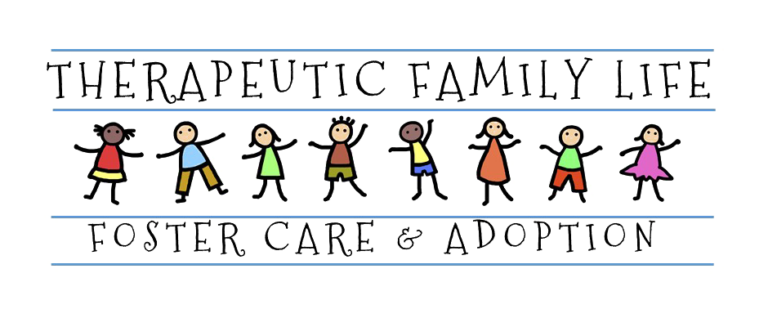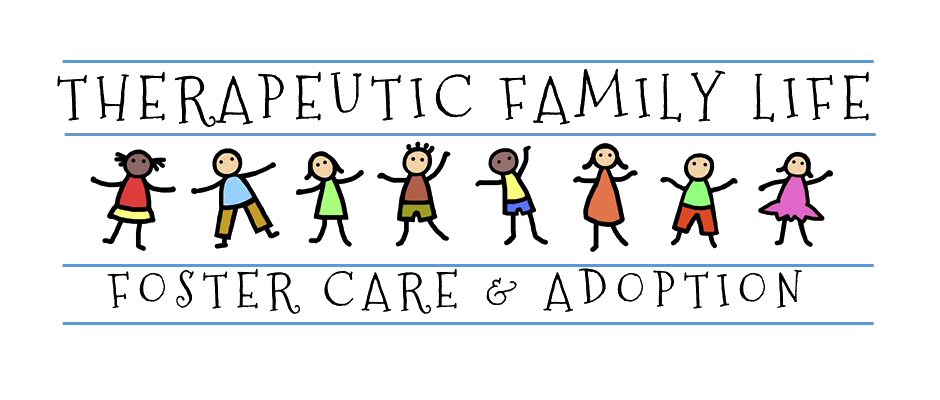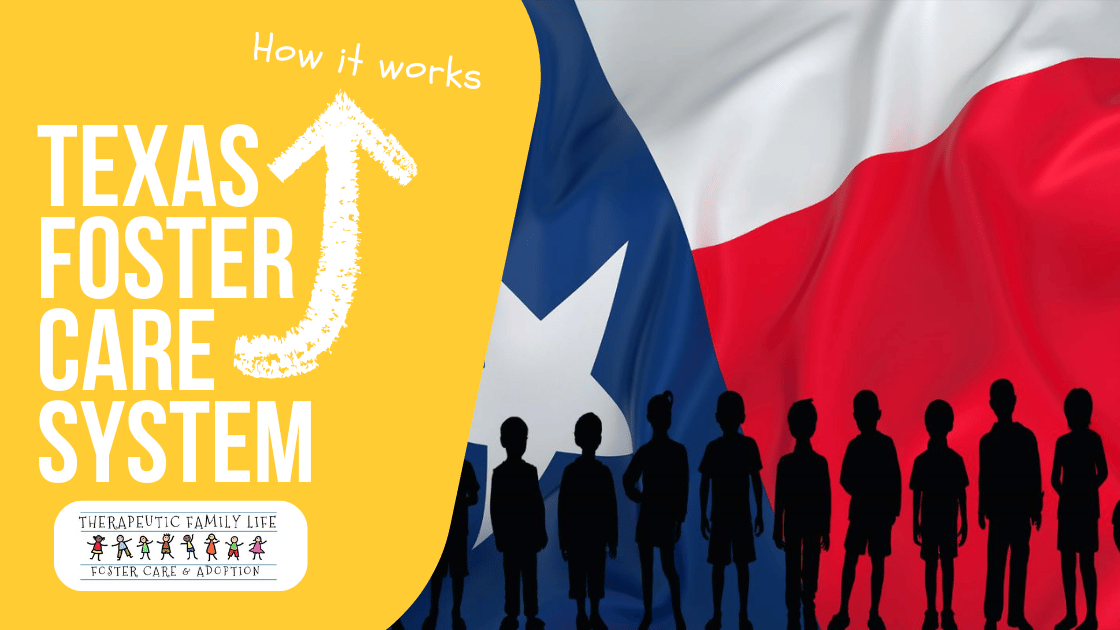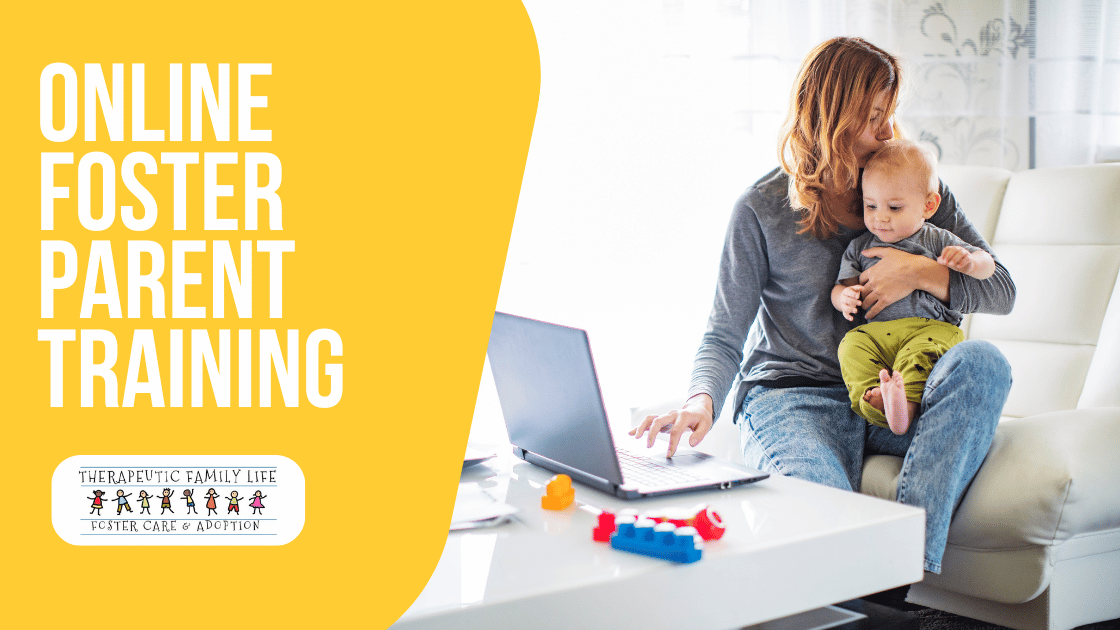If you’re looking to adopt in Texas, you’ve come to the right place because, in today’s blog, we’re breaking down everything you need to know about the process.
Adoption, as a whole, is a wonderful gift you can provide to a child in need. As of publication, around 6,000 children are waiting to be adopted in the state of Texas. Fostering to adopt is a great way to familiarize yourself with the process and get your feet wet with what it means to open your heart and home to a child in need – something our compassionate foster-to-adoption care team at Therapeutic Family Life can helps you with.
As mentioned earlier, this blog will provide an in-depth view of what you can expect when you choose to foster and then adopt. As such, we will be answering commonly asked questions such as what happens to the biological parents’ legal rights, what’s included in the home study, and the different foster-to-adopt programs available in Texas.
What Does Foster-to-Adopt Mean in Texas?
Adoption is the process of legally assuming responsibility for a child after their biological parents’ rights have been terminated.Fostering, on the other hand, is the process of assuming this responsibility with the expectation and goal of reunification. Fostering to adopt blends both of these processes.
Through a fostering-to-adopt program, you will temporarily care for a child with the understanding that he or she could be returned to their biological parents or other family members. The difference with this type of program, when compared to a traditional foster program is that you can set your intention of adopting the child in your care should reunification not be possible. If reunification is not possible and the biological parents’ rights are legally terminated, you can move forward with the adoption process.
One of the most important things to know about foster-to-adopt programs is that the family courts tend to favor adoption for those who are already fostering. In other words, if your foster child becomes a candidate for adoption, you should expect a (relatively) straightforward process of adopting them into your family and making that bond permanent.
How Many Kids Are Currently in Foster Care in Texas?
As mentioned above, there are about 6,000 children seeking adoption in the state of Texas, though the number for the entire country is much larger.
In Texas, specifically, the number of children in the foster system is a little bit more than 28,000. Though these numbers are based on statistics from 2021, they show the disparity between those in the system and those waiting to be adopted, highlighting the importance of foster-to-adopt programs. The foster care system is handled by the Texas Department of Family and Protective Services (DFPS). Once a child is in their care, they will arrange for them to stay with responsible, approved foster parents who can care for them until either reunification or adoption. It’s with this department that you’ll convey your wishes and intention to adopt the child placed in your care.

On top of providing placement with loving families, DFPS also provides foster care children with medical attention and/or intervention, contact with close relatives (when appropriate), and other supportive services (but more on this later). If you’d like to learn more about DFPS,click here.
Benefits of Fostering Before Adoption
As mentioned earlier, fostering allows you to get familiar with bringing a child into your home. However, it allows you to work with DFPS, including case managers, and find out where you can go for an array of supportive services, not limited to behavioral and therapeutic.
Furthermore, fostering before adoption lets you see how strict the process is. At the end of the day, it’s the state’s responsibility to make sure that the child they are placing in your care is going to a good home. As such, you will need to submit to a home study and background check to get approved. Both of these processes are necessary whether you adopt or foster, so fostering ahead of time puts your information on record, streamlining the adoption process later on.
Plus, the biggest benefit of fostering before adoption confirms that it’s something you want to do. While many fosters who intend to adopt go on to do so, some also decide that it’s not for them. In cases like these, fostering allows you to make a decision that benefits both your family and the child in your care in the long run.
Who is Eligible to Foster and Adopt in Texas?
We’ve outlined the eligibility requirements for those who want to foster or adopt in Texas:
- Be at least 21 years old
- Submit to a background check, including an overview of your lifestyle and history of abuse and/or neglect
- Complete aFoster Care and Adoption Parenting application, which is available on the Texas Department of Family and Protective Services website
- Have both familial and non-familial references
- Be financially stable and have proof
- Agree to a home study with all members of the household, including those who visit regularly
- Attend NTDC meetings to learn about the challenges children living with abandonment issues might face, as well as the effect foster care/adoption can have on your family, how to communicate effectively, and much more
Oftentimes, many people who are interested in fostering or adoption are surprised by the requirements, as there are usually misconceptions about moving forward with the process unmarried. However, you do not need to be in a relationship to adopt or foster; As long as you can meet these eligibility requirements and have the means to provide a stable home, you will be considered a good candidate.
If you have questions about these requirements, the good news is that you don’t need to navigate this all alone. Therapeutic Family Life has worked with many local families and helped them understand these eligibility requirements, assisted them with filling out the application, and provided guidance on what steps they can take to become eligible for fostering and adoption. Families throughout the Lonestar State have trusted us to help them meet their foster-to-adopt goals.
Can I Adopt the Child I’m Fostering?
Absolutely! However, there are some important details you should know.
First and foremost, you should know that just because adoption is possible, it doesn’t mean it’ll be possible in every case. As noted above, your foster child’s parents must have their legal rights terminated before the topic of adoption ever becomes a viable option. This termination can either come voluntarily, in which the parents choose to give up their parenting rights, or involuntarily, which is what could happen if they fail to meet the custody requirements set forth by the family court.
If your foster child’s biological parents relinquish their rights, their immediate family will then have the option to move forward with adoption, regardless of whether they’re in your temporary care. Remember, the goal of fostering is ultimately reunification with the child’s biological family. Even if they’re not reunited with their parents, staying within the family can be beneficial for their mental health, providing stability, a familiar environment/culture, and proximity to a life they knew. It’s because of these benefits that blood relatives are allowed to adopt before the foster parents.
If reunification with any biological family members is not possible, then you will be considered and allowed to adopt in Texas. In cases like this, you will work with your caseworker and a permanent placement agency to move through the process, where you will go through another home study, submit to several background checks, file an adoption petition with the court, attend training classes, and go to court to finalize the adoption. The timeframe for this process varies, but on average, can take about a year to a year and a half.
While it may be disheartening to hear that you may not be able to adopt the child you’re fostering, understanding what the process entails can help you manage expectations. As previously stated, the goal of any type of foster care program is reunification, so while you may find that your situation doesn’t allow for adoption, you should still feel proud of yourself for offering a safe space when it was needed the most.

That being said, if your goal of becoming a foster parent is to eventually adopt, please tell that to the agency and/or caseworker you’re working with. For those of us here at Therapeutic Family Life, knowing your long-term goals helps us match you with the right child. As of 2021, 25% of all foster children were adopted by their foster parents – an eight percent increase from years past.
Steps to Adopt in Texas Through Foster Care
If you’re ready to adopt in Texas, you should expect to take several steps. The state is very thorough with the process to ensure that the child is in the safest of hands.
Here’s a breakdown of the steps you’ll need to take to adopt through the foster care system:
Step 1: Attend an Information Meeting
The first step is to visit your local DFPS office or go online to their website to locate a nearby information meeting. These meetings set the groundwork for what you can expect as a foster parent or adoptive parent. At them, you’re encouraged to ask as many questions as you want. While there’s no set list of questions to ask, some of the most common include:
- Do I need to be married to adopt or foster?
- How much does it cost?
- What do I have to show for proof of income or financial stability?
- What is a home study?
These meetings are free to attend and do not require a reservation. If you’re looking for local meetings on the DFPS website, you can get started by selecting your county. Upon doing so, a list of local meetings, including who to contact will pop up. If necessary, you can also request Spanish-speaking hosts.
Step 2: Complete the Application and Home Study
If one of your questions at the information meeting was “What is a home study?”, the answer will be revealed here.
After you apply to become a foster or adoptive parent (detailed above), you’ll be assigned a case worker to conduct a home study. A home study is essentially an analysis of your home. It’s when your case worker will visit to inspect its layout and safety to confirm that it’s the right environment to raise a child in. At this home study, your caseworker will ask you different questions, including but not limited to your parenting style, lifestyle, strengths in childrearing, and interests, as well as an in-depth look at your family and personal history.
During this home study, your caseworker is, of course, analyzing your answers but also looking at the sum of both what you say and your surrounding environments. They will look for the home’s safety features, including fire extinguishers, pool covers, fences, proper storage of dangerous items, and working smoke detectors. If you are fostering or adopting with a partner, they will observe how you communicate and interact with one another, as well as gauge both of your commitment to fostering and adopting.
These little observations are also in addition to having you submit to a criminal background check, showing proof of financial stability and diverse documentation, such as marriage licenses, medical records, and birth certificates.
Remember, the home study is a comprehensive look at safety, commitment, parenting styles, communication, physical and mental health, and everything in between.
Step 3: Training Requirements
At some point throughout the process, you will also have to undergo significant training, which is mandated by the Minimum Standards for Child Placing Agencies. As a prospective foster or adoptive parent, you will have to attend the National Training and Development Curriculum for Foster and Adoptive Parents (NTDC). This 19-hour training covers important topics including but not limited to:
- Child development and attachment
- Dealing with trauma and related behaviors/behavior management
- Communicating effectively
- How to prepare for and manage intrusive questions
- Effects of foster care on the family unit
- Maintaining relationships with biological family members and/or their community
- Creating a stable environment
- Parenting in culturally or racially diverse families
There are also optional trainings you can take, including the impact substance abuse can have on a child, how to practice cultural humility, and how to deal with mental health conditions. It’s important to note that depending on the agency you’re working with, you may have to undergo additional pieces of training, as well.
Step 4: Foster Care Placement
When you want to foster and eventually adopt, waiting to be matched with a child is often the most difficult part because of the waiting period involved. Considering that it takes about three months to be approved as a prospective parent, you can expect to play the waiting game for several months.
However, don’t despair, because the good news is that once you receive that call, all your hard work has officially paid off! (And what an amazing call it is, too!) When you are matched, you will be notified by your caseworker. They will share details with you about the child potentially coming to your home, and if it is determined to be a good fit, will be staying with you. For how long depends on the nature of the situation and if reunification is possible.
Step 5: Finalizing the Adoption
As mentioned above, the adoption process, on average takes about a year to a year and a half. It will depend on the details involved with your foster child and their family, including how long it takes for his or her biological parents to have their rights terminated.
To finalize the adoption, you will first need to undergo several post-placement visits. Though not as common, if you were fostering a child from out of state but are planning to adopt him or her, or are planning on moving out of Texas, you’ll be required to complete Interstate Compact on the Placement of Children (ICPC) paperwork. These documents, which can take up to 10 business days to process, confirm that your child will receive the same services and protections if living outside of their state of origin.
Once the home visits are complete, you’ll go to court. Once at court, you will be sworn in before a judge who will ask you about your ability to care for the child you’re seeking to adopt, fact-check details with your caseworker, and then issue the final adoption decree. From there, you can have a new birth certificate and social security card issued, as well as take that sigh of relief that the process is over, and start celebrating!
Common Challenges in the Foster-to-Adopt Process
As previously mentioned, knowing what to expect from the foster-to-adopt process is important for managing expectations. However, it’s also beneficial for overcoming specific challenges. One of the biggest challenges you’ll face has to deal with the emotional aspect of foster care.
While some children may end up in foster care due to the death of their parent or primary caretaker, oftentimes, the majority of them have faced indescribable abuse, neglect, and harm. These kinds of experiences can lead to outbursts of anger, misbehavioral issues, and most significantly, feelings of loss and abandonment.
Though the trainings offered by the state cover these topics in-depth, sometimes the best thing you can do is put yourself in their shoes. Children in foster care are still in their stages of development and may not fully understand why they’re suddenly living with someone new, asking you why they can’t just go home. Offering kind, supportive, and age-appropriate understanding and communication can calm their nerves, provide information to cover the gaps, and help develop trust.
In addition to the emotional challenges, you may also face challenges with the timeframe or delays in the legal processes. Not only can the holiday season slow down processes, but you may face legal complexities with your foster child’s birth parents. For example, not only must your foster child have been in the system for 15 out of 22 months before their biological parents’ rights can be terminated, but they could prolong the process if they do not wish to cooperate.
While this is not an exhaustive list of the challenges you could face, it underscores the importance of attending the information meetings and working with a specialized foster-to-adopt team to help you prepare for the potential pitfalls and identify ways to either deal with or overcome them.
Available Programs for Foster-to-Adopt by TFL
With understanding what to expect also comes exploring your options. When you work with Therapeutic Family Life, you will work with one of our specialists to see whether concurrent planning, resource parenting, or fostering for adoption is the best route for you.
Here’s a helpful overview of each of these available programs:
Concurrent Planning
Through concurrent planning, the goal is to reunify the foster child with their biological family as soon as possible while simultaneously creating an alternative permanency plan. With this, usually, timeframes are established and decisions are made collaboratively with the welfare agency, the child’s family, and other entities.
Resource Parenting
Resource parenting is available to those in Texas who have already been approved to serve as either a foster parent or legal adoptive parent. The benefit of resource parenting is that it allows flexibility, depending on the unique situation of the child.
Fostering for Adoption
As detailed throughout this blog, fostering for adoption gives prospective parents options. Though the end goal may be to adopt the foster child, that only becomes possible after their parents’ rights have been terminated and placement with other family members isn’t viable.
Through fostering for adoption, you get to offer temporary placement for a child in need while working on the goal of reunification, but having an alternative plan in case that doesn’t happen. Fostering for adoption, in many ways, is similar to concurrent planning, as you are striving for two goals at once. However, the difference is that it’s not as much of a collaborative effort and you can express your desire for adoption to the caseworker and agency you’re working with so you can be matched up with a child that this might be a likely circumstance for.
At Therapeutic Family Life, we can help you with all three programs and answer questions so you know which one is the best choice for you and your long-term goals and plans.
The Role of Therapeutic Family Life in the Foster-to-Adopt Journey
At TFL, not only can we help you with the programs mentioned above, but we can answer any question you have about the foster-to-adopt process in Texas. We can also help you schedule and navigate your home study, match you with a child, and provide the training you need to set you up for success both now and moving forward.
It all starts by filling out our inquiry form, where you’ll let us know whether you want to be a foster or adoptive parent. Upon submission, a member of our team will be in contact with you ASAP to help you move through the next few phases of the process.
As this blog has shown, the process of becoming a foster or adoptive parent can be complex and there are many moving parts. The more moving parts there are, the easier it is to miss crucial steps, including filing deadlines or other important details. Furthermore, you may be curious as to whether this waiting period is considered normal, among many other common concerns and curiosities.
It’s not uncommon for prospective parents to be scared about what to expect from the process, hearing horror stories of incredibly long wait times. When you attempt to deal with this without the help of an agency, you might be risking a negative experience by being left out in the dark. We are here to be that guiding light for you, sharing insight and industry knowledge that is only surpassed by our compassion. We are passionate about helping children find the loving, supportive homes they deserve.
Just like them, you also deserve a positive experience that includes knowing your rights, your options, and how to prepare. That’s exactly what we’re here to provide!
Resources for Families Interested in Foster-to-Adopt in Texas
Not only are we dedicated to providing you with support throughout your journey but we’re here to provide helpful resources, too.
If you’re ready to begin, here are some of the resources you’ll need to familiarize yourself with the process and glean helpful information:
- Texas Department of Family and Protective Services
- A Parents Guide to Foster Care
- Foster Family Resource Directory
These resources put you directly in front of the definitions, training, tips, legal services, and support services you may need on your foster-to-adopt journey in Texas. We know these resources very well, among many others. When you work with us, we can connect you to these resources easily, taking the legwork out so you can focus on your family.
Contact Therapeutic Family Life in Texas to Discuss Your Foster-to-Adoption Options Today!
There’s nothing quite as special as opening your heart and your home to a child who needs it. For personalized guidance on which route to take, the team at Therapeutic Family Life is here to help you explore your options so you can be matched with the right child, and by proxy, that child can be matched with the right family.
Whether you choose to foster or eventually adopt, there’s nothing you can do that’s more rewarding. Our goal is to make this a seamless, streamlined process for everyone involved.Contact ustoday to get started. We encourage you to fill out aninquiry form or ask about testimonials from our foster parents.
When it comes to finding stable, loving homes for children in the Texas foster care system, TFL takes immense pride. Start your rewarding journey as a foster or adoptive parent in Texas today.
Courtney Dercqu is a freelance writer and editor living in Central Florida. Having written about everything from healthcare to tourism, she holds a passion for helping others, which is how she landed at Therapeutic Family Life. She holds a Bachelor of Arts in Creative Writing and English. Her work has been published in Elite Daily, Collective World, Thought Catalog, The Good Men Project, YourTango, and many more.About This Author

Courtney Dercqu





